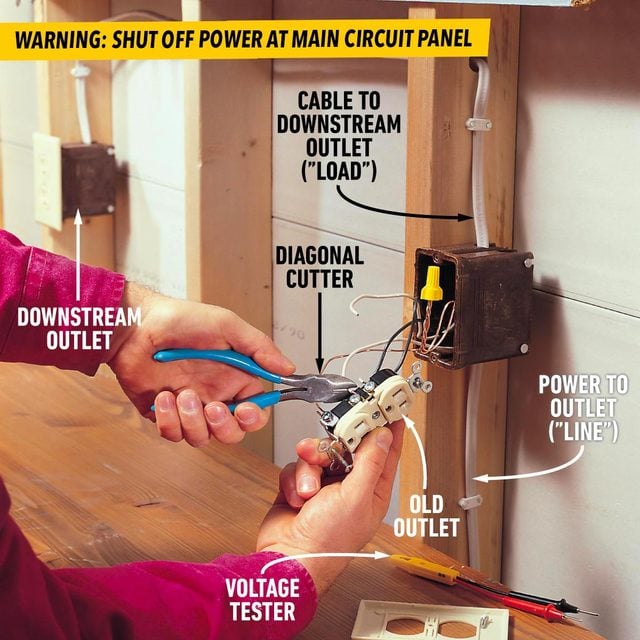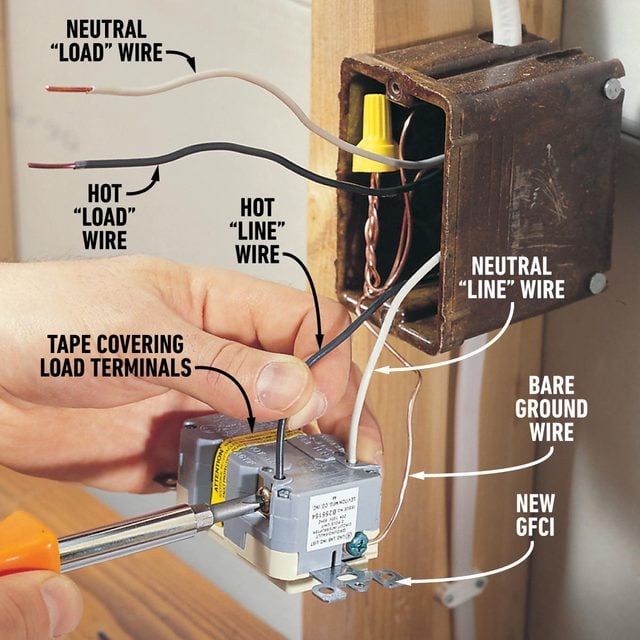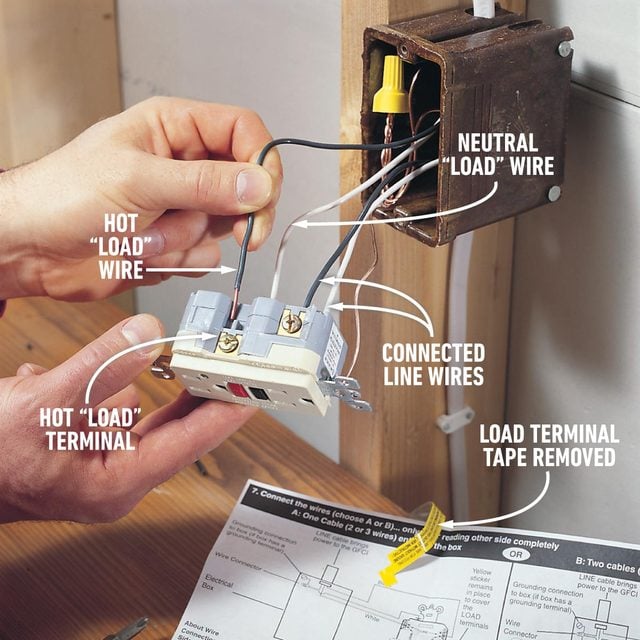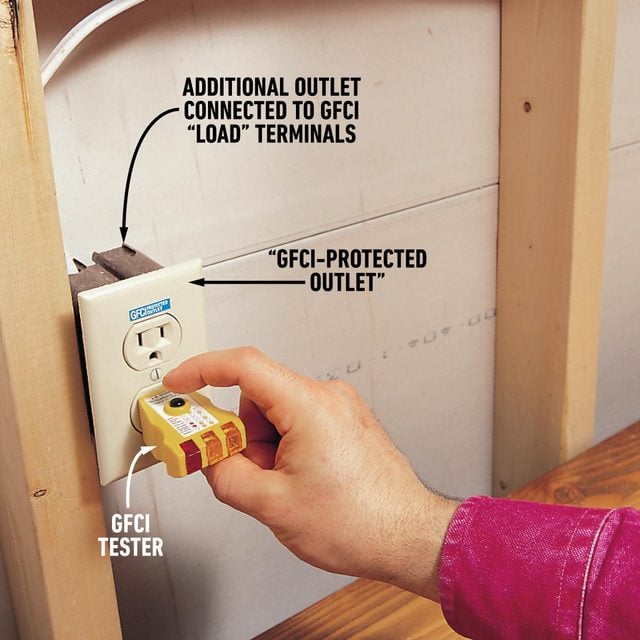


GCFI outlets provide cheap insurance against deadly shocks.
![]()
Time
![]()
Complexity
![]()
Cost
Installing a GFCI outlet doesn't have to be confusing. Follow these steps and photos to install a GFCI without getting line and load connections confused.
GFCI outlets reduce the danger of deadly shock from faulty plug-in cords and devices. A GFCI (ground fault circuit interrupter) is a special type of outlet that detects dangerous ground faults and immediately turns off the power to stop shocks. You can replace almost any electrical outlet with a GFCI outlet. Correctly wired GFCIs will also protect other outlets on the same circuit.
While it’s common to find GFCI outlets in bathrooms and kitchens, there are GFCI outlet requirements. The electrical code also requires GFCIs in unfinished basements, garages, most outdoor receptacles and places where construction activity occurs. We’ll show you how to replace a standard duplex receptacle with a GFCI and wire it to protect other outlets. (For more information about wiring outlets, see Wiring Switches and Outlets).

TMB Studio


TMB Studio

TMB Studio

TMB Studio
When you pull out the old outlet, count the number of wires in the box. Calculate the minimum box size required for all of the wires plus the GFCI. If the existing box is large enough, follow the steps above to replace the outlet with a GFCI. If it’s too small, buy a larger box before proceeding.
To figure the minimum box size required by the National Electrical Code, add:
1 – for each hot and neutral wire entering the box
1 – for all of the ground wires combined
1 – for all of the cable clamps combined (if any)
2 – for each device (switch or outlet—but not light fixtures)
Multiply the total by 2 for 14-gauge wire and 2.25 for 12-gauge wire to get the minimum box size required in cubic inches. Plastic boxes have their volume stamped inside. Steel box capacities are listed in the electrical code.
Originally Published: October 09, 2020